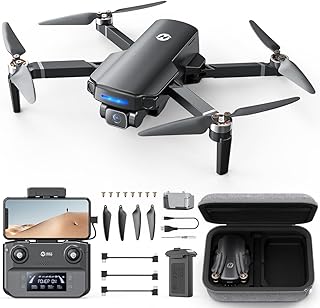Drones for Environmental Monitoring: A Sustainable Solution
Drones, with their agility and technological capabilities, are increasingly being recognized as a powerful tool for environmental monitoring, offering a sustainable and efficient alternative to traditional methods.
Here's why drones are a game-changer for environmental monitoring:
1. Comprehensive Coverage and Accessibility:
* Remote and Inaccessible Areas: Drones can easily navigate rugged terrains, dense forests, and remote islands, providing access to areas difficult or impossible for humans to reach.
* Large-Scale Monitoring: They can cover vast areas in a short timeframe, allowing for comprehensive data collection on a scale previously unimaginable.
2. Cost-Effectiveness and Efficiency:
* Reduced Operational Costs: Drones significantly reduce the cost of traditional methods, like manual surveys or manned aircraft, by eliminating the need for expensive equipment, personnel, and logistics.
* Faster Data Collection: Drones capture data quickly and efficiently, enabling rapid response to environmental events and real-time monitoring.
3. Environmental Impact:
* Minimal Disturbance: Drones operate with minimal disturbance to the environment, minimizing impact on sensitive ecosystems.
* Lower Carbon Footprint: Compared to manned aircraft, drones consume significantly less fuel, reducing their carbon footprint and promoting sustainability.
4. Enhanced Data Accuracy and Insights:
* High-Resolution Imagery and Data: Drones equipped with advanced sensors can capture high-resolution images, thermal data, and multispectral imagery, providing detailed insights into environmental conditions.
* Real-Time Data Analysis: Data collected by drones can be analyzed in real-time, enabling faster response and informed decision-making.
Specific Applications of Drones in Environmental Monitoring:
* Biodiversity Monitoring: Mapping wildlife populations, identifying habitat changes, and tracking species movements.
* Forest Management: Detecting deforestation, monitoring forest health, and mapping fire risk.
* Water Quality Monitoring: Assessing water quality, identifying pollution sources, and monitoring water levels.
* Climate Change Monitoring: Tracking glacier retreat, measuring sea-level rise, and monitoring carbon emissions.
* Disaster Response: Assessing damage after natural disasters, locating survivors, and supporting relief efforts.
Challenges and Considerations:
* Regulations and Licensing: Strict regulations govern drone operations, requiring proper licensing and safety protocols.
* Data Management and Analysis: Efficient data management and analytical capabilities are essential to extract meaningful insights from drone data.
* Battery Life and Range: Limited battery life and range can restrict drone operations, requiring careful planning and logistical considerations.
Future of Drones in Environmental Monitoring:
* Increased Automation: Advancements in AI and machine learning will enable autonomous drone operation, further enhancing efficiency and data analysis.
* Integration with Other Technologies: Drones can be integrated with other technologies like satellites and sensors to provide comprehensive environmental monitoring solutions.
* Expanding Applications: New applications for drones in environmental monitoring are constantly emerging, driven by technological advancements and a growing awareness of environmental challenges.
Conclusion:
Drones are transforming environmental monitoring by offering a sustainable, efficient, and cost-effective solution. Their ability to access remote areas, collect accurate data, and provide real-time insights empowers us to understand and protect our planet more effectively. By embracing this innovative technology, we can build a more sustainable future.


